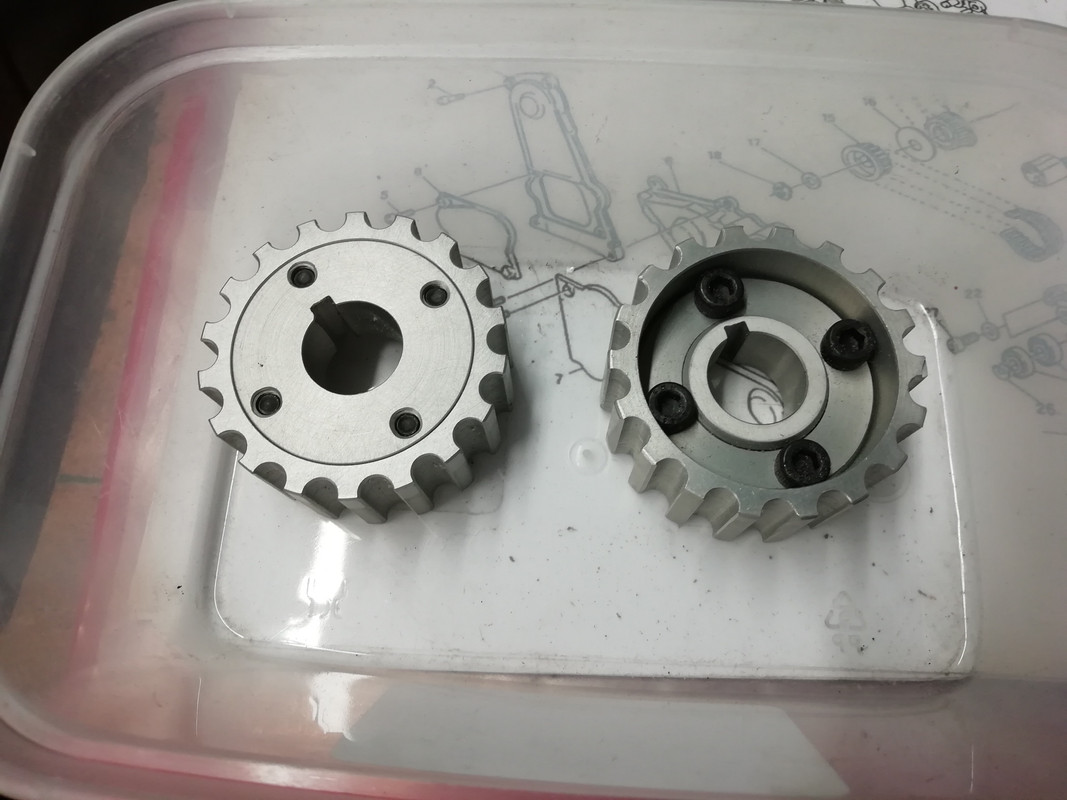Well lots of good proress today in less than a couple of hours.
First I fitted the oil seal into the clutch case, the one that that sits over the end of the crankshaft, went in a treat, pressed in with my thumbs with some red rubber grease.
The large seal red that sits around the gearbox input shaft was another story. It would not go in square and kept slipping out, eventually I managed to get it started but had to finish fitting it with a small soft faced dead blow hammer. This seal does not have a register to determine how far into the case it sits, so I had to guess how far to keep tapping it into the case.
The oil pump was then re-installed with new mating seals and then the clutch case was ready to fit.
After I had dosed the gasket faces with three bond and tried to fit it I realised that the big clutch seal was not into the case far enough as the outer lip of the seal was not quite over the edge of the large drilled boss on the input shaft (which the clutch basket bolts to). I had to push it about a 1mm further in for the seal to properly seat.
Next I fitted the gudgeon pin circlips using my home made tool, which did not work first time and needed a tweek with a file to radius the top corners of the SS grub screw. Thereafter it was perfect and took less than 30 seconds to fit each circlip.
 thumbs up origin
thumbs up origin
Thanks for the advice above re bearing fitting.
All the while this was going on the cam bearings with a seal removed from the blind side were sitting in the freezer and the cam bearing caps were reposing in front of the garage fan heater.
For the first one I started it with my thumbs then covered the outer surface with some plastic foam and popped it in the vice and squeezed it. I did not notice that the outer face is not square with the machining for the bearing housing so it ended up about half way in and about 3mm crooked.
This took about 20minutes with the dead blow hammer to get straight.
The second one was started with my thumbs then lightly tapped on the outer race with the dead blow hammer - so a result.



























 Linear Mode
Linear Mode

